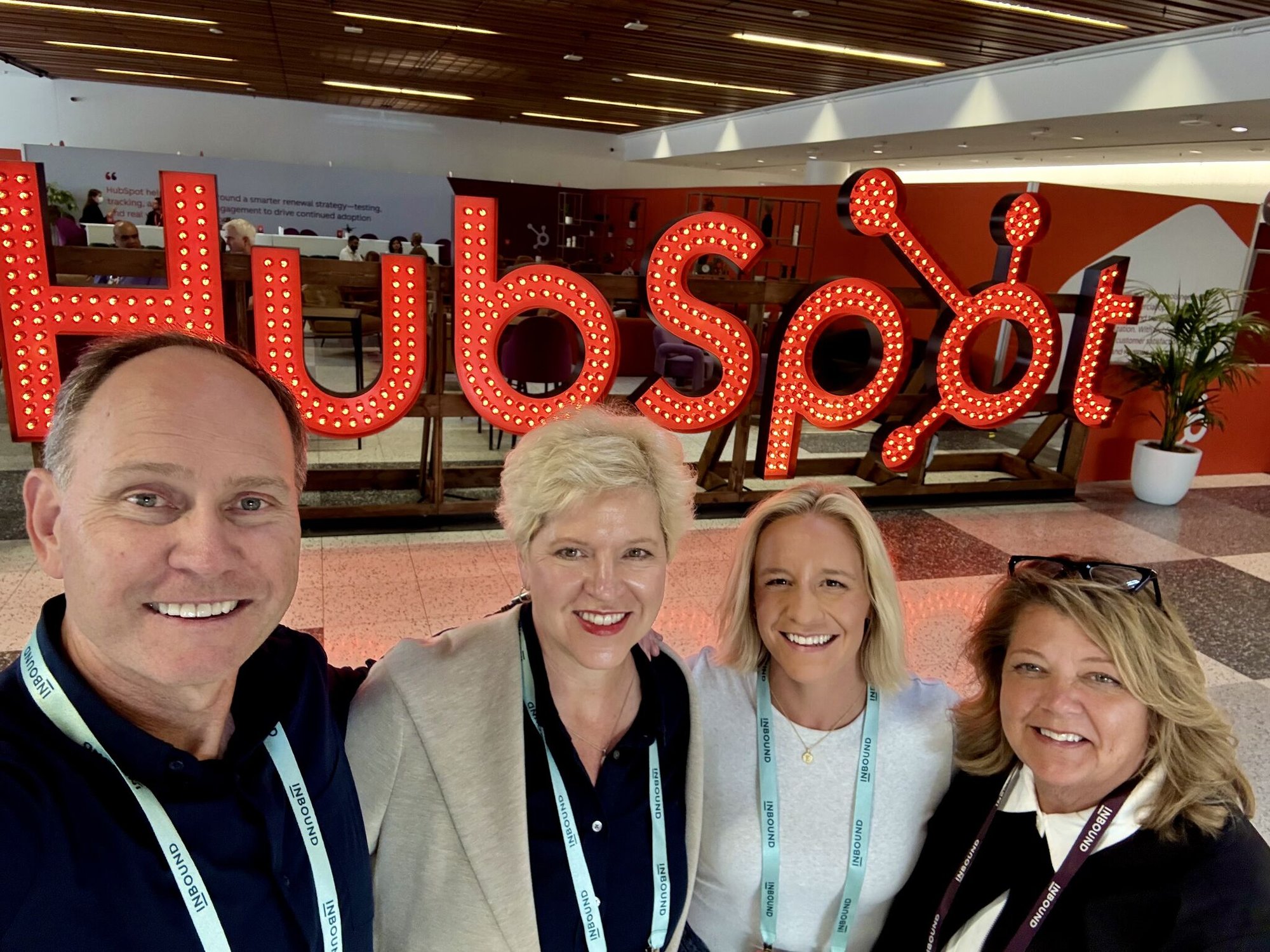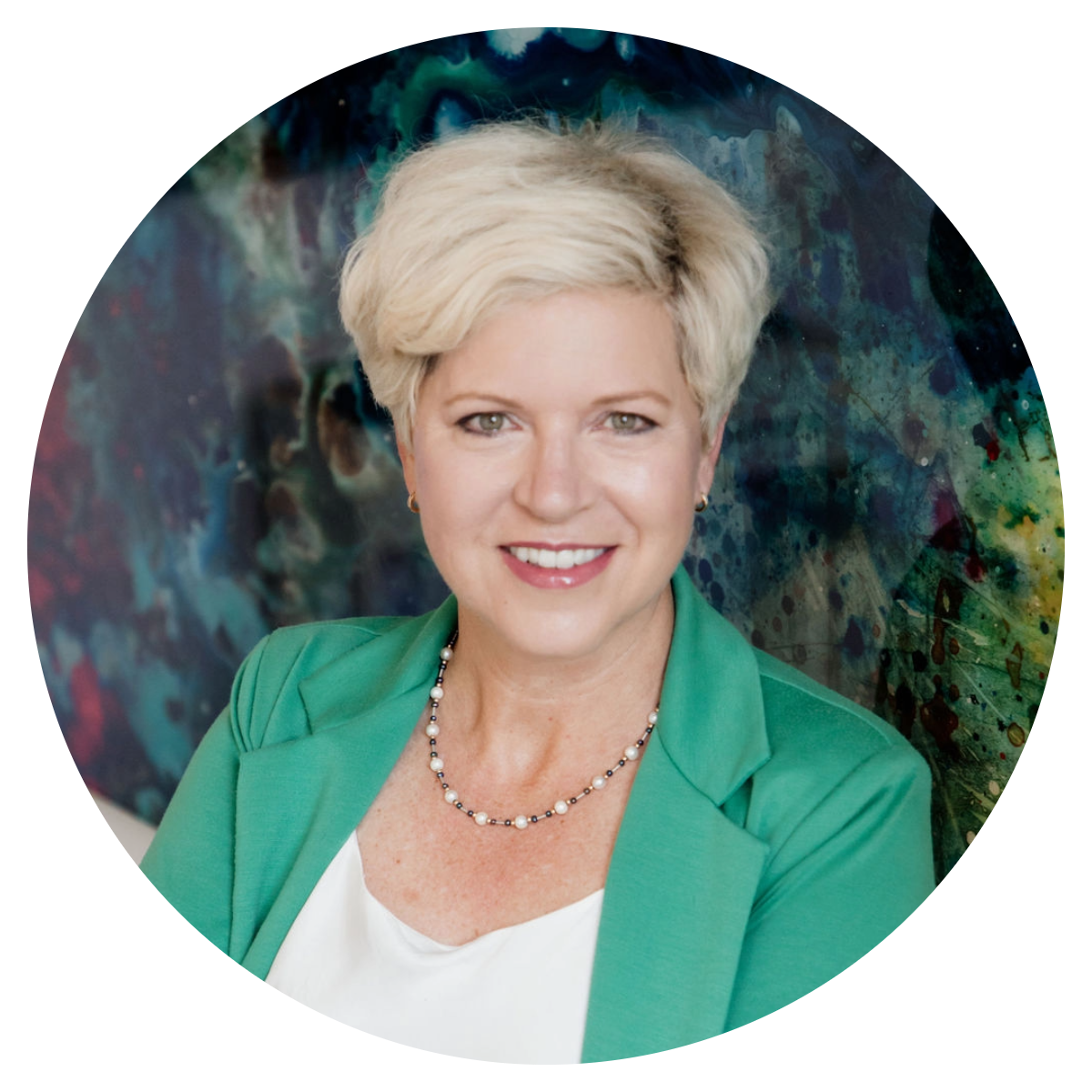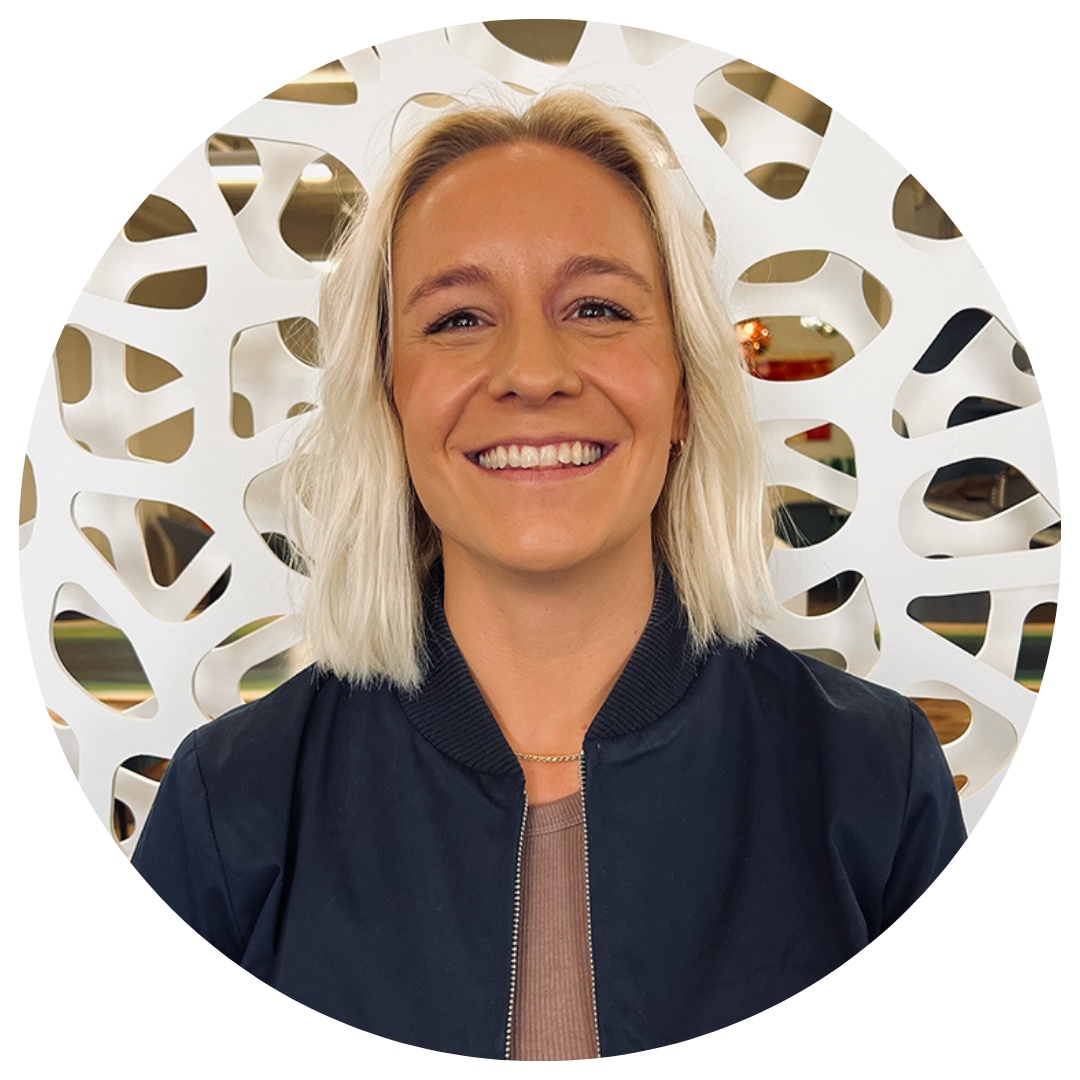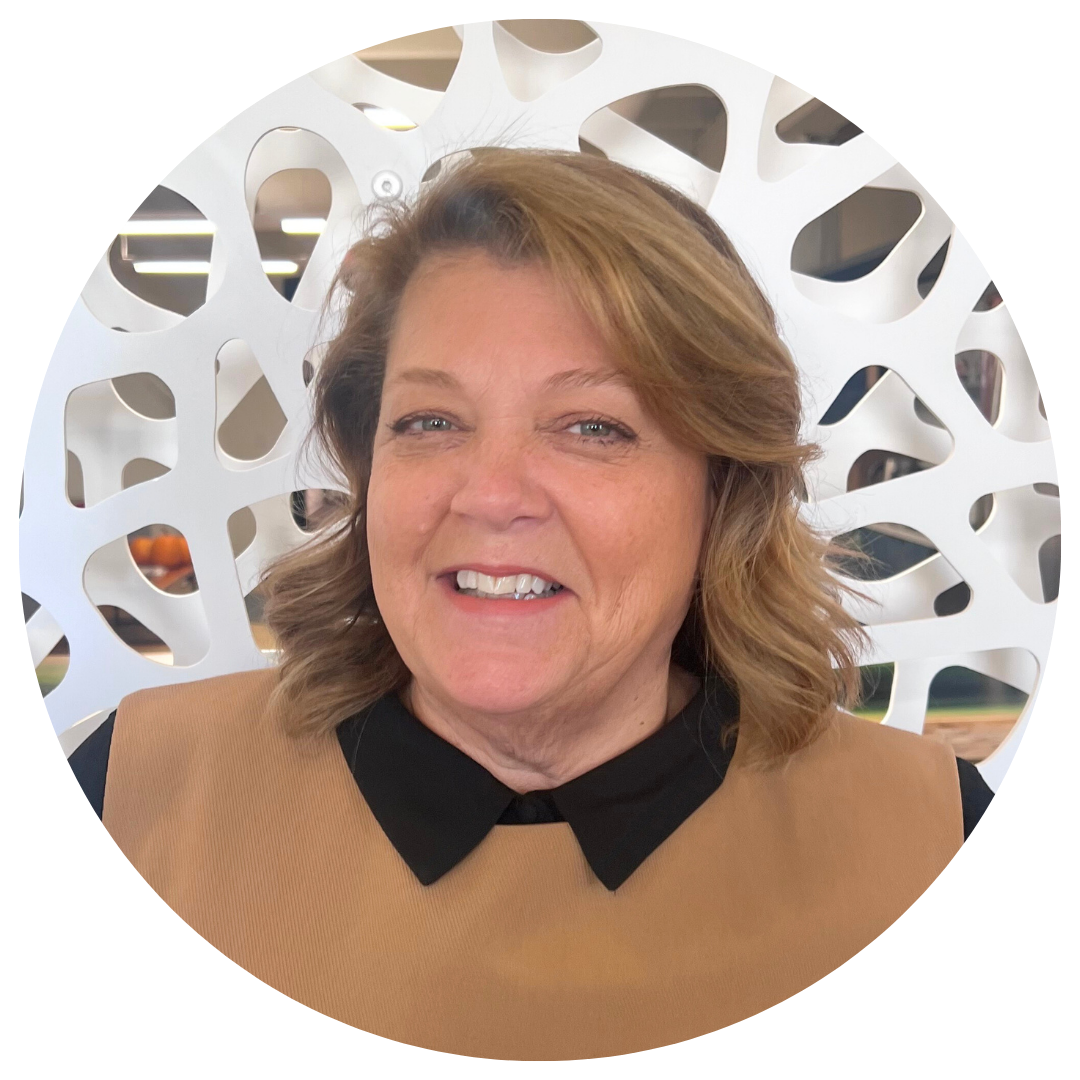The Denamico INBOUND Debrief

Beyond the Buzz: Your Strategic Guide to HubSpot’s Fall Releases
HubSpot INBOUND releases are equal parts exciting and overwhelming. We're here to cut through the noise and deliver strategic clarity on what will accelerate your growth.
Join Brendon and Kristin Dennewill, Emily Grotkin and Sam Annala for an exclusive session design for current and past Denamico clients. They’re back from INBOUND and ready to share their unfiltered takeaways about the event and product releases.
We’ll move beyond the buzz, focusing on areas that will guide your strategy and growth for the next year.
Submit your specific challenges and questions during registration so we can tailor our discussion to address what you're facing.
You'll Walk Away With:
- A criteria for evaluating which releases deserve your attention (and strategic reasons to ignore others)
- Foundational requirements for leveraging relevant features
- Practical insights on how market shifts are changing what works
- Key product releases that will impact processes and outcomes
Panelists

Kristin Dennewill
Co-Founder & Co-CEO of Denamico
Kristin is a digital transformation leader. As Co-Founder and Co-CEO of Denamico, she helps mid-market and enterprise organizations modernize their go-to-market systems through strategic CRM implementation, revenue operations optimization, and responsible AI adoption that drives measurable business value.

Brendon Dennewill
Co-Founder & Co-CEO of Denamico
Brendon brings three decades of global leadership experience across six countries to his role as Co-Founder and Co-CEO of Denamico. His diverse background spans duty-free operations, commercial fishing management, and international business development, giving him unique insights into building scalable operations and navigating complex global markets.

Emily Grotkin
VP of Partner and Client Success at Denamico
Over the past 10 years, Emily and her team have helped 200+ midmarket and enterprise companies implement HubSpot solutions that enable operational efficiency, incredible experiences and scalable growth.

Sam Annala
Client Growth Director at Denamico
Sam is an experienced sales and RevOps leader who builds high-performing teams that drive multimillion-dollar growth through data-driven insights, sales coaching, and customer-centric operational excellence.
The Denamico INBOUND Debrief
What were the biggest takeaways from HubSpot Inbound 2024?
Brendon Dennewill: I had two big insights after thinking about all the 200-plus updates and announcements that were made at Inbound. Number one is the future is all about strategic leadership. And number two is that the future of business teams will be human plus AI.
Kristen Dennewill: For me, it was a day one moment. If you're not familiar with Jeff Bezos' day one methodology or mindset, essentially we are either in every business in day one or day two, and day two is the beginning of the decline. Day one is where we think, if we're not trying to replace ourselves, someone else is going to. So how do we continually disrupt our own companies to stay at the front of where the world is going? This isn't really about using AI to retrofit what we've done in the past. It's rethinking our businesses with the technology that's available today, including AI, of how we move forward from today.
Sam Annala: I had more observations. I thought there was an overwhelming interest in AI automation, but there was a lot of confusion around how we implement this. What does this really mean to us and our businesses? From an SMB perspective, they were really excited about the accessibility of enterprise level features at a reasonable cost. Enterprise clients were concerned about data governance and AI oversight. They're kind of past the wow factor and now what does it really mean and how are we going to manage it? But there was one overall consistent theme, even for us here at Denamico: How do we not get left behind?
Emily Grotkin: One thing that really stood out to me at Inbound is that AI is going to transform your business. The question is whether the impact of that transformation is going to be net positive or potentially negative. A lot of that is going to come down to how you adopt it, how early on you start adopting it, and whether that gives you a competitive edge or if you're competing to sort of keep up. My takeaway: start early, start small, and iterate over time. The HubSpot tools give you a really great place to do that.
How should businesses prioritize which HubSpot features to implement after Inbound announcements?
Sam Annala: When we spend time with our clients talking about optimization, we always start by asking about their biggest business challenges. This hype around AI, let's do all this AI stuff - you really need to step back and ask yourself, what are you trying to solve? That's what CRM should be focused on. What are the most important things to my business and is my CRM aligned to help drive growth and meet those KPIs?
If I have a pipeline issue, what is the issue within my pipeline? And then the question is, how are all these AI features going to help me solve this issue? Rather than just throw something in there and say, this was supposed to fix this. We prioritize what solutions get rolled out based on what I'll call an impact and effort assessment. How much impact am I going to have and how much effort does it take? Once I've identified that, is it really worth it for me to do that?
If you have low adoption and you're putting in all these cool new tools, but nobody knows how to use them or how they're really actually improving my day-to-day work life or my workflow, they're not going to get utilized. So it's really a step-by-step process. Business first, then what's the impact and effort assessment? Then what's my likelihood of adoption and how do I ensure that's going to happen?
Kristen Dennewill: I don't even think about the number of features and new releases. I think more about what are the pain points that we need to solve now, the blockers to achieving our business goals. And then is there functionality that can help us do that? Everybody's already very busy. Nobody's looking for new things to do. So if we're going to spend time on something, it has to be because there's a clear ROI to doing that. I always start with the objectives or big pain points.
Brendon Dennewill: The analogy that I've been using is, whether the number is 200 or you want to categorize them into smaller groups, they've given us a whole bunch more arrows to put in our quiver. But you're only using one arrow at a time. It's what is the particular challenge that a client faces, because every business is at a different phase of growth and challenges, and which of these new tools can we pull in, and which of the existing tools do we need to prepare so that they can use the new ones?
What is the process for sequencing HubSpot feature implementation?
Emily Grotkin: The first step is unpacking relevance. What I mean by relevance is relevance to the goals of the business, the challenges of the business, and what is most relevant to helping to solve or address the goals or the challenges that we have.
The second then is potential impact. If we now have a list of tools that are relevant to our goals and challenges, which of those do we think is going to have the biggest impact?
Readiness needs to be a really big part of that because if it has the potential to have a big impact, but we don't have the things that we need to actually implement it successfully or to maximize the value and impact that we think we could get out of it, it's not as helpful.
Then also where is there more urgency? If there are some things that are really relevant to our goals and challenges that we think can have a big impact, but some of these things have more urgency than the others because of something that's going on in the market or something that would have a big impact on your customers, then that can be a helpful way to work through what are the things that we really need to focus on first. Then you've got a list that you can go back to and start mapping that into a backlog that you can continue to execute on maybe over the next 90 days or the next year.
Kristen Dennewill: I would just make a note that there needs to be some level of cross-functional stakeholders looking at these different things. Having different cross-functional representation in terms of evaluating where is there friction, where are there opportunities here, I think is really important.
Sam Annala: Really focusing on some quick wins helps the team. Finding some quick wins, whether it's in the financial realm or the sales realm or the delivery realm or service, really helps the teams get energized and to avoid burnout. We look for some really quick wins in the beginning and then we plan out a year because that gets all of our clients and all of their team members really excited about what's happening and gets them bought in. Then we really focus a lot on change management, which focuses on adoption and understanding the change and being aware of the change and having the desire for change, all those things combined with training and support.
What are the limitations of HubSpot's new CPQ (Configure, Price, Quote) functionality?
Emily Grotkin: HubSpot announced new commerce and specifically CPQ tools and some changes to the quote functionality inside of HubSpot. For existing customers, you will still continue to have access to the same quote tools that you might be utilizing today, but there is some additional new CPQ functionality that was announced that is pretty powerful.
It has taken the HubSpot quote functionality that existed in the legacy platform and really built out some new and more robust use cases. More robust quote building capabilities, especially as it relates to templates and what you're able to change and edit within a template. Also giving your team the ability to take a template and edit certain parts of it. More flexibility in pricing and quote approvals, expanding the quote approval that existed in the legacy tools to account for a lot more rules and logic.
Along with that came a closing agent, which is a really cool tool for customers to be able to actually chat with an agent and ask questions about your price or your security credentials or something along those lines. Although the functionality that was rolled out was really exciting and quite frankly a long time coming, it still has a ways to go.
It's a good fit for companies that have pretty simple and small product or service catalogs, probably somewhere under a hundred products or services that need to be supported. And for teams probably under 50 companies, under 200 employees. Once you start getting past that point, some of the features that were rolled out in the new CPQ functionality are going to start breaking down. Although we took some big steps forward, I think we'll be sitting in a very different place a year from now. For those that it is a good fit for, it checks some really big boxes that have been missing. For a little bit bigger teams with a little bit more complex needs or more products, it probably still has a little ways to go.
Why is CRM data quality important before implementing AI features?
Kristen Dennewill: The ability to connect ChatGPT, Claude, and now Gemini to your HubSpot I think is amazing. I believe HubSpot is the first CRM to enable that. But I think the reason it's not necessarily super useful to companies is if they haven't already in a position where they've got high user adoption in their CRM. The data is not yet in HubSpot to really leverage the value of having the AI attached to it. Before I would worry about that, I would worry about how do we get user adoption up to whatever our expectation is and make sure we've got good data in the CRM to be able to really get the most out of connecting AI.
Emily Grotkin: In addition to adoption of your CRM and having just solid HubSpot data, the other limitation is all the data for your business that lives outside of HubSpot. If you've got an ERP system that has a lot of customer data, for example, and maybe that ERP isn't integrated with HubSpot or isn't syncing all of the data from that system, the good news is I think some of the Data Hub, previously OpsHub, announcements and advancements specifically with Data Studio is going to unlock new capabilities to utilize that data with that AI tool. The data needs to be there to really maximize that capability. A lot of companies will have some other places they'd like to start bringing data in from to really see that maximized.
What role does strategic leadership play in AI adoption?
Brendon Dennewill: Every leader who was at Inbound, no matter what business they're in, they walked away thinking how does our business strategy need to change? We all know that it's going to change fundamentally. Change management has never been more important in business. We've been using change management for the adoption of all technology focused around CRM now for a few years.
But the need for change management at the highest level where leadership is communicating to the entire team before any kind of adoption or implementation of any technology, be it CRM or AI, they have to be very clear about the why. Why we're going to be doing this and that the change is going to be worth it.
The possibilities and all these exciting opportunities that were announced and that are now possible are not going to be possible without really strategic change management and planning. Processes are going to change. When processes change, and they're typically changing for the better, especially now if you're adding AI as part of those processes, those are all very exciting things, but we've never been through this kind of change before. Making sure that you're thinking about change management as you approach these is going to be really critical.
How does HubSpot's new functionality help manufacturing and construction companies with complex sales?
Sam Annala: I was really excited about a couple of things that are becoming much easier or have even been made possible for manufacturing, architectural and engineering construction space, and industrial manufacturing product suppliers.
First, account-based selling and complex stakeholder management. The enhanced deal pipeline now supports multi-decision maker sales cycles, giving teams far better visibility and control. That's something they haven't had.
Second, long sales cycles. These industries have months, if not years in their sales cycles. The new loop marketing playbook creates an always-on dynamic nurture system. It's not just marketing, it's not just sales. The most transformative thing is sales and marketing have to work in that loop. It's a union, a continuous union now. We've been saying that forever, but now with customer agent and prospecting agent, we actually make this possible and put the lift in the right places, the right nurturing, bring up sales-ready leads and keep constant contact with our customers.
Third, territory management and lead routing. Advanced automation now leverages HubSpot's teams, custom territory properties and workflows to route leads automatically by region, by zip code, other rules that you have within your system. That removes manual handoffs and gives clear pipeline visibility, which is really hard in those situations where we've got regions, we've got five business units within those regions, we have 27 offices within there, and we need visibility to that entire thing. We need those leads to go to the right person at the right time with no duplication so we're not making fools of ourselves showing up and putting two bids in that don't match to the same customer.
There's a Midwest building products manufacturer who automated handoffs between estimators and reps across time zones. Cutting response times dramatically and freeing their teams to focus on selling instead of doing all the admin work. It seems simple, but it was very manual before, very messy, and at the moment aspirational. Now it's possible, practicable, and scalable.
What is HubSpot Data Studio and how does it help businesses?
Emily Grotkin: Data Studio just really gives you limitless potential and access to data without it having to reside inside of HubSpot. Data Studio specifically gives you the ability to bring in and clean up any data, update data inside of HubSpot, or just even import and use it for segmentation or automation purposes.
Really a lot of different ways that you can access data from any tool outside of HubSpot. A lot of different native connectors, but if you can get it into a CSV format or an Excel spreadsheet, Google Sheets, what have you, it really opens up the door to do a lot with that data, even if you don't actually bring it into your CRM. It can kind of just live in that Data Studio, be utilized for segmentation or reporting or for automation, but you don't actually necessarily have to go so far as to update your CRM if for some reason you didn't want to bring all the way into your records. That unlocks a whole laundry list of new capabilities.
How does HubSpot CPQ improve the customer buying experience?
Brendon Dennewill: Ultimately what we and HubSpot are always aiming to help our clients do is to improve the customer experience throughout the entire journey. If you think about the last thing that you purchased, even for home, that was a bigger ticket item, if you had to do multiple steps to buy something, whether it was a hot tub or an alarm system or you name it, if you had to go through three steps just to make a payment, that is not a great way to start a relationship.
A lot of businesses have been focusing on providing a great customer experience beyond the purchase, but the initial transaction is such an incredible opportunity to start off a good customer relationship. That's one of the things that I'm really excited about with CPQ and Commerce Hub as it continues to get stronger and stronger.
Kristen Dennewill: Wherever we have manual processes in our businesses, even if it's not really friction, it slows things down and it also introduces the opportunity for errors to happen because it's a manual process. We've been using HubSpot quotes for a long, long time. In fact, we've had a couple of clients say we don't have Sales Hub, but we want to be able to use that quote functionality because it was such a nice buying experience, so seamless for the buyer to use that.
For the businesses where that is a good fit, like you don't have an enormous number of products or service codes, having that functionality then integrated with whatever your accounting system is reduces so much manual processing time and should accelerate when you get paid and cashflow. There's just a lot of upsides in that.
Emily Grotkin: For a long time, I feel like we've been talking about the fact that you could go online and Tesla had found a way to make it pretty easy for you to buy a $60,000 car, but buying services from a professional services firm or buying a product from a manufacturing company has still been very complicated, takes a long time, a lot of sales intervention, a lot of sales conversations. The CPQ functionality really just takes some big steps forward in starting to make it a heck of a lot easier for people to buy from you and for them to pay you. That is going to be a game changer.
What foundational steps should businesses take before implementing AI in their operations?
Emily Grotkin: One thing is just gaining some general foundational knowledge about how AI works. I think just a little bit of AI knowledge can go a long ways in the capabilities it unlocks for how you utilize it.
When it comes to AI, start small and then iterate over time based on what you learn from it and about it, what works and what doesn't work. Don't lose too much sleep over getting it right or wrong. Just start small and add things on incrementally.
No matter what you do with AI, it's going to require access to data in order for it to be impactful. Thinking about where does our data live, is it clean, how could we improve our data cleanliness, how can we have a more holistic look at our data as a company - all of those things are going to be really good foundational things to start thinking about and start looking at.
At the end of the day, the worst thing that you can do is do nothing. Doing anything at all, taking some small steps and just starting is going to put you at an advantage. I think we see a lot of businesses that are overthinking it or trying to take on too much at once. I heard a stat recently of what percent of AI initiatives are failing for businesses. I think that comes down to trying to make AI into a much larger initiative than the business is ready for. Start small and think about where your data resides, how clean it is.
Brendon Dennewill: Do an audit of your processes today and see where there might be opportunities to make changes, whether those changes are just because of changes in technology without AI, but then potentially also changes with AI, where AI can start to assist those processes and make them better. Once you've done that manually, you can then have smart people go and figure out exactly how to build the micro solutions into those processes. At the end of the day, you have a functioning process, but even that is never done. You're probably going to need to do that now for the future on a monthly or at least quarterly basis. Eventually you're going to have AI doing that for you with someone checking to make sure that it makes sense before they confirm and pull the trigger and make the changes.
Map your processes manually and then that'll tell you where there's potential opportunity in CRM and AI to help you be more efficient.
How should businesses approach testing and iterating with new AI features?
Kristen Dennewill: The more that businesses can operate like engineering firms where we create an MVP, a minimum viable product when we want to test something. We test it, we get feedback, we iterate, and we have a pretty agile process to do that. Starting small, that continuous testing, because a lot of these things are not going to work. We have to know not everything's going to work, but it's still worth doing these things because we're going to learn in the process. That's going to make version two or version three so much better.
In this day one Amazon methodology, they talk about one-way door versus a two-way door. One-way door, those decisions we do need to take time before we go down them, because once we go through the door, there's significant consequences or it requires a big investment. But a two-way door, we can go through it and we can come back if it doesn't work. Knowing upfront before we are going to do something, is this a one-way door or a two-way door? The two-way doors, those decisions shouldn't require a lot of approvals. You want more people empowered to make those types of fast decisions, the better.
How do HubSpot's new features support businesses without requiring separate AI initiatives?
Sam Annala: One of the biggest wins from Inbound was how the releases make it easier for people to use HubSpot in the right way from day one. AI has been embedded in there, but that's not a big AI decision. Features like customizable deal pipelines, automated territory management, they actually help sales teams work the way they actually work, which speeds up the adoption and builds clean, reliable data right out of the gate.
Once you have that, now we get to the loop. Once the basics are in place, you can naturally move into the next phases and you can iterate next phases of optimization using HubSpot's new intelligence features to scale the high-value work, like predictive lead scoring and AI-driven nurture loops and things like that.
We can start with the fundamentals and HubSpot has made improvements in those fundamentals. We can then iterate with these naturally embedded things. We don't have to take it as a different initiative. We can just take a look at our HubSpot. Once we go through that door, it doesn't mean we don't have that two-way door and we can't come back. This gets you live, gets you working in what's available today. New features help you evolve and it builds on the foundation. You're continuing the improvement, continuous optimization, stay agile, and drive that stronger ROI without having to take on some ancillary AI product.
What is the AEO Grader and why is it important for businesses?
Kristen Dennewill: There was a tool that HubSpot officially launched at Inbound called the AEO Grader. They shared a lot of data about marketing teams in general over the last year struggling to get the same results that they've had in the past, and organic searches are down overall based on research. The reason is because so many people are using AI to actually do their searches to begin with.
We all as businesses want to make sure that we're found when our prospects are using ChatGPT or Claude or Gemini or whatever to find businesses that are our prospective clients. Making sure that we're found, this AEO Grader tells you how you rank against your competitors and gives you recommendations and actionable steps on how you can more likely be found in AI through the content that you're publishing.
What features in HubSpot's Sales Workspace can help sales teams be more productive?
Emily Grotkin: If you haven't looked at the Sales Workspace, go take a look at it. There's a lot of really cool tools in there that will help you prep for your day. If you're starting off your day at eight, nine o'clock tomorrow morning, whatever time it may be, open it up, take a look. It'll basically walk through here's what meetings you have and it will help you prep for those meetings.
You can use Breeze Assistant to even ask questions like, going into a connect call with a new prospect, prepare me a list of questions. There's a lot of really powerful tools in there and it'd be a great one to check out when you're starting your day tomorrow if you haven't already.
What is the most important action business leaders should take after learning about HubSpot's new AI capabilities?
Brendon Dennewill: A question that's come up a lot this year is why weren't more businesses getting ahead of this AI thing in 2024? One of the realizations that I came to was that in 2024, it didn't seem that there was really worth including a budget in your planning for 2025.
But I'm guessing that with all the incredible things that have happened in moving AI forward this year, whether you're in the HubSpot ecosystem or not, if you're currently in the middle of strategic planning and then budgeting for 2026, whatever you do, make sure that someone in your company is including a budget for incorporating AI and the change related to AI that's going to impact your business in 2026 and beyond.
What is one quick win businesses can achieve with HubSpot tomorrow?
Sam Annala: If I were waking up tomorrow morning, I'd pick one growth blocker and I'd go after it. Then I'd figure out how is HubSpot going to help me get to a quick win. If you don't have an answer to that question, call Denamico. We'll help you figure that out.
Brendon Dennewill: Whatever that blocker is that you decide tomorrow morning to tackle first, it's taking those use cases in your business that are currently opportunities or challenges or obstacles and finding a tool that's going to help you overcome that. By doing so, by actually using a tool, by the time you're done, you're going to have other ideas of how to use a different tool the next time and how to do it faster and better. Share that with your teammates.
That's one of the other benefits of starting with this very specific use case, doing it, and then you learn in the process. It's a great combination - it's a very tactical way to get started, but it becomes strategic because you're actually teaching yourself how to use these tools by using one. When you use the second and the third, it'll be that much easier.
